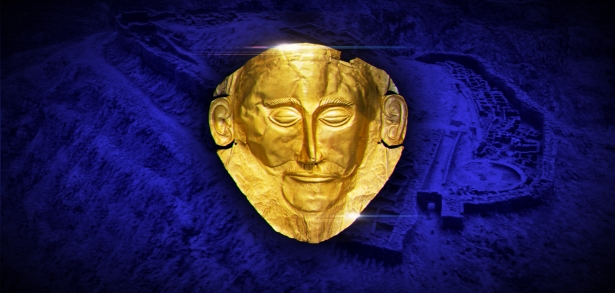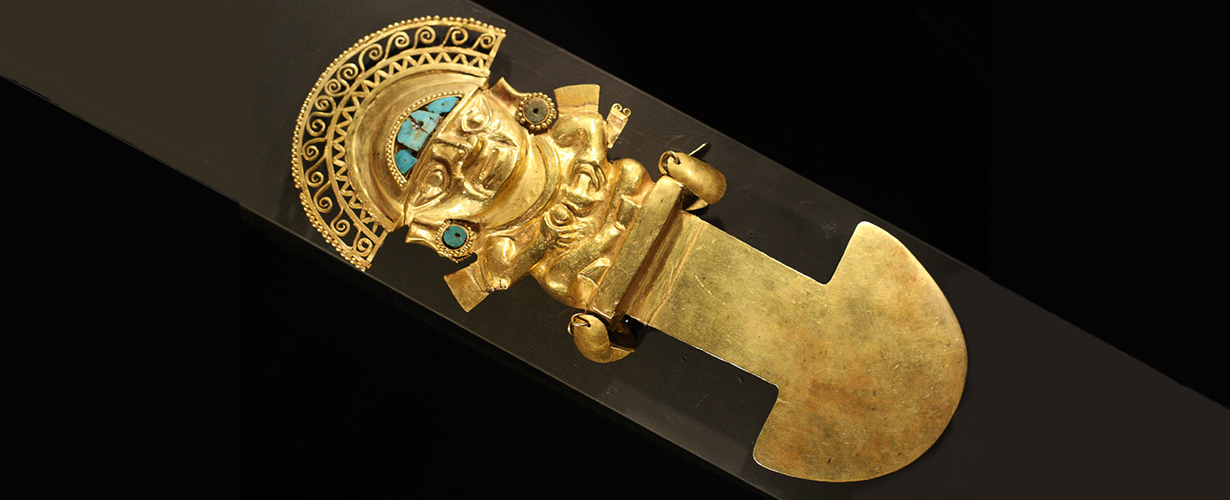
The golden knife – the power symbol of a bygone age
The golden sacrificial knife, aka tumi, used during the rites of Peruvian Tumis, has an ancient history. The Sican predated the Inca civilization; the VIII-XIV centuries marked the heyday of the Sican culture spreading across the north of South America.
Metalworking was one of the great achievements of the Sican people: they cast copper alloys, silver and gold in high-temperature furnaces and made refined objects from metals, including ceremonial knives.
The tumi knife looks like a small semicircular hatchet, the handle of which is decorated with decorative images of birds, fish, animals or the deity Naylamp. The length of the knife is nearly 30 centimeters.
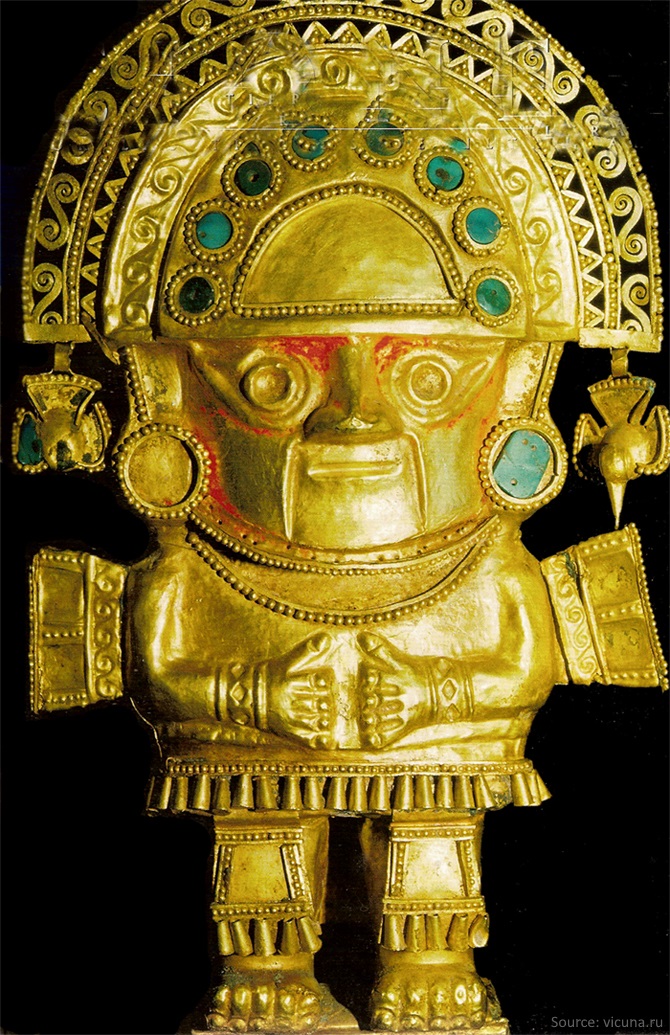
In the photo: Naylamp, the deity of the Sican, the mythical ancestor, the founder of the Sican tribe.
Naylamp was portrayed as a broad-faced man with eyes of a bird, wearing a semicircular headdress in the form of an open fan with wavy sea-themed ornaments. The deity with small wings on each side was holding the ball and the tumi knife.
The Sican deity was almost always made of gold. The figurine was richly decorated with turquoise, symbolizing clear sky and water – the forces of nature controlled by the almighty deity. The golden tumis belonged to the nobility – the high priests, commanders and rulers.
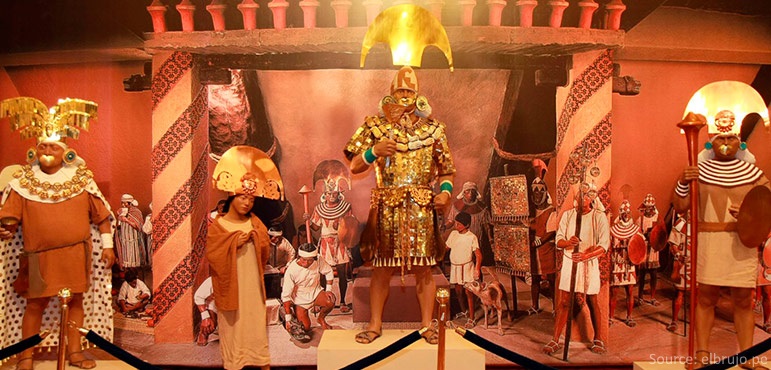
In the photo: the image reconstruction of the Sican’s tribe leaders.
The tumi transcends ancient cultures, even the Sican culture, given that it can be traced back to the I-VIII centuries – the pre-Columbian Moche culture in Peru. The ceremonial knives of that period were sickle-shaped and made of copper.
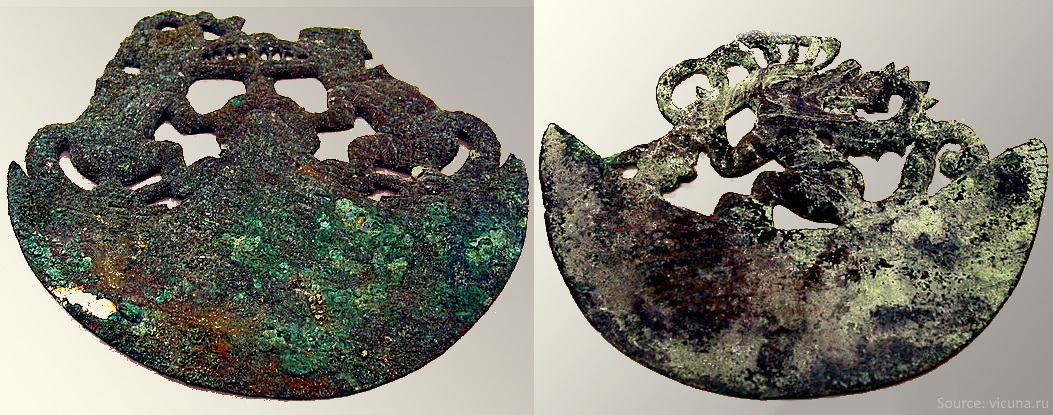
In the photo: gilded copper tumis, the II-III centuries. Images of dragons were often depicted on the Moche knives.
The new culture emerged after the Sican – the Inca civilization. The Incas applied the knowledge of the Sican people in metallurgy. In Cusco, the capital of the Inca state, jewelers from all over the country were mastering their skills. They made precious metal adornments for the court aristocrats.
The ceremonial golden tumi knives of the Inca period were lost. It is quite possible that the conquistadors minted Spanish doubloons from them. There is a scientific theory that the knives with the image of Naylamp were out of use, because the Incas had their own deity – Inti. The third version is that the more civilized people stopped practicing sacrificial rituals, hence the knife was no longer needed.
The tumi knives that have survived to this day are stored in the Gold Museum of Peru and Weapons of the World in Lima, the Metropolitan Museum of Art and other American and European galleries.


